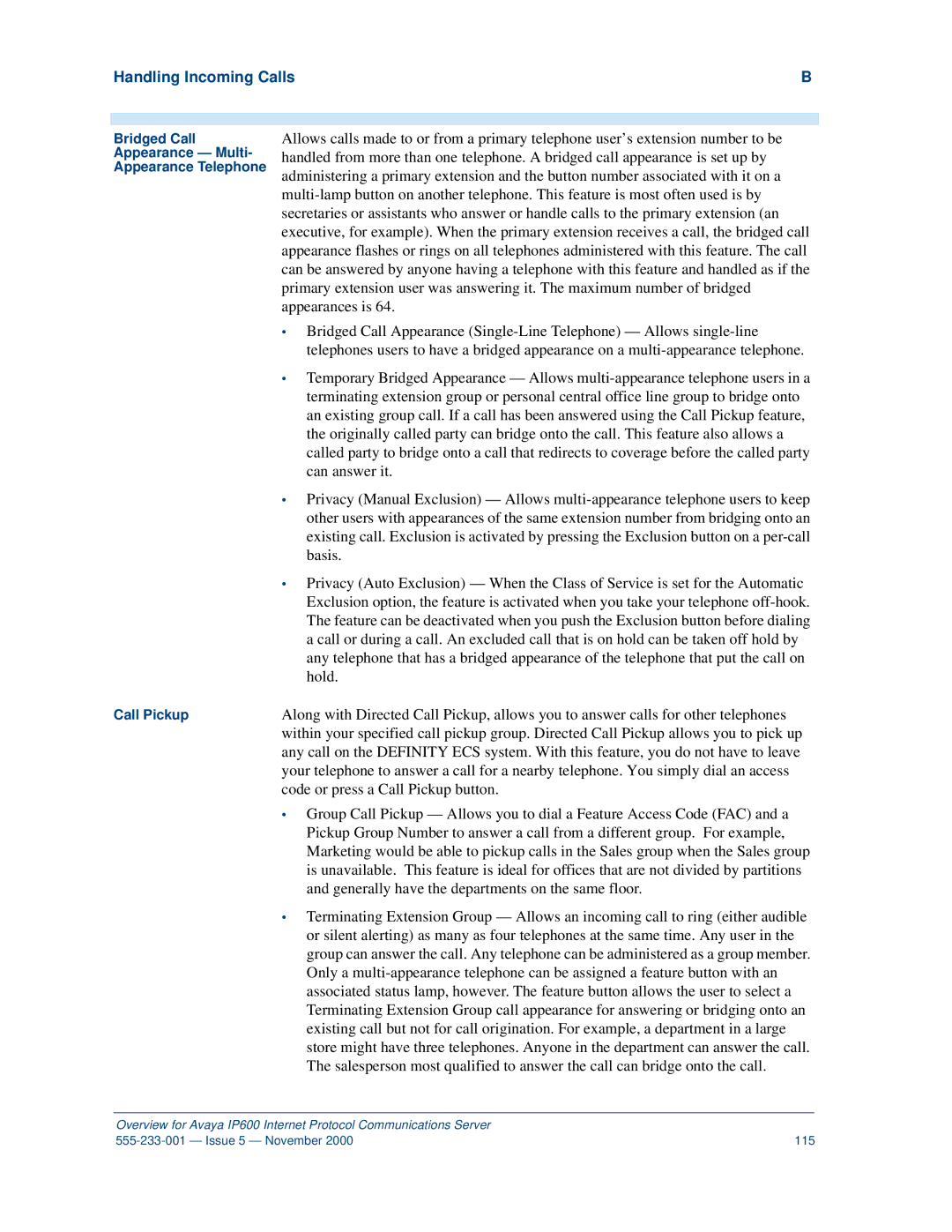Handling Incoming Calls | B |
Bridged Call
Appearance — Multi-
Appearance Telephone
Allows calls made to or from a primary telephone user’s extension number to be handled from more than one telephone. A bridged call appearance is set up by administering a primary extension and the button number associated with it on a
•Bridged Call Appearance
•Temporary Bridged Appearance — Allows
•Privacy (Manual Exclusion) — Allows
•Privacy (Auto Exclusion) — When the Class of Service is set for the Automatic Exclusion option, the feature is activated when you take your telephone
Call Pickup | Along with Directed Call Pickup, allows you to answer calls for other telephones |
|
| within your specified call pickup group. Directed Call Pickup allows you to pick up | |
| any call on the DEFINITY ECS system. With this feature, you do not have to leave | |
| your telephone to answer a call for a nearby telephone. You simply dial an access |
|
| code or press a Call Pickup button. |
|
| • Group Call Pickup — Allows you to dial a Feature Access Code (FAC) and a |
|
| Pickup Group Number to answer a call from a different group. For example, |
|
| Marketing would be able to pickup calls in the Sales group when the Sales group | |
| is unavailable. This feature is ideal for offices that are not divided by partitions | |
| and generally have the departments on the same floor. |
|
| • Terminating Extension Group — Allows an incoming call to ring (either audible | |
| or silent alerting) as many as four telephones at the same time. Any user in the |
|
| group can answer the call. Any telephone can be administered as a group member. | |
| Only a |
|
| associated status lamp, however. The feature button allows the user to select a |
|
| Terminating Extension Group call appearance for answering or bridging onto an | |
| existing call but not for call origination. For example, a department in a large |
|
| store might have three telephones. Anyone in the department can answer the call. | |
| The salesperson most qualified to answer the call can bridge onto the call. |
|
|
| |
Overview for Avaya IP600 Internet Protocol Communications Server |
| |
115 | ||
